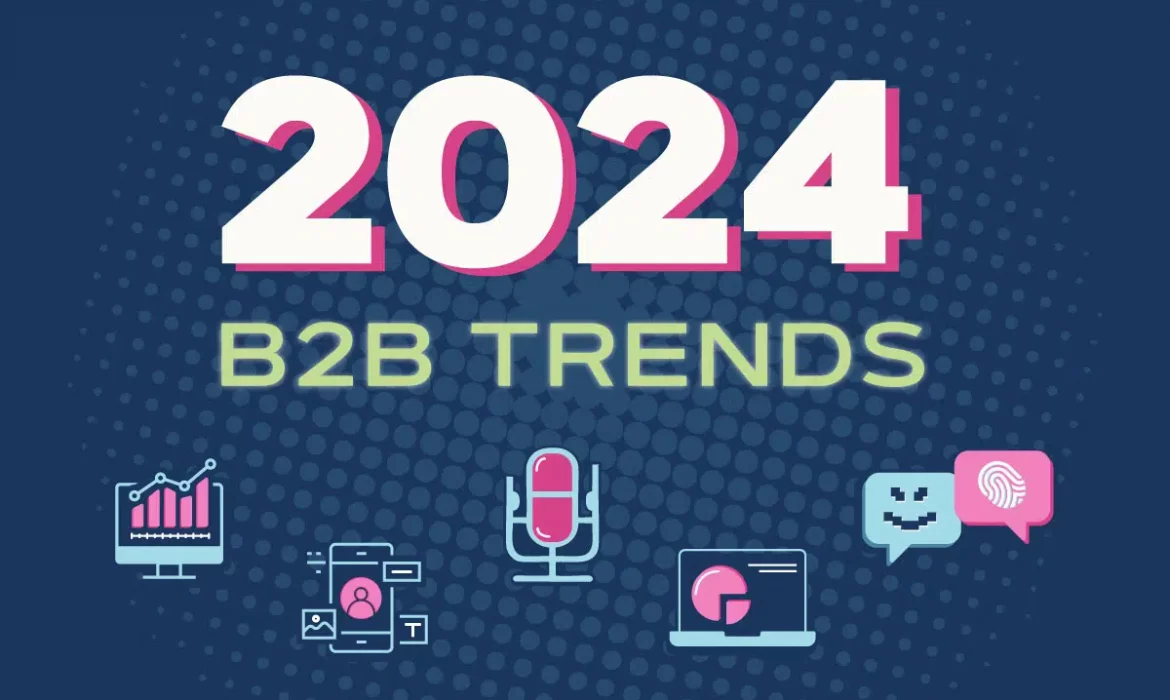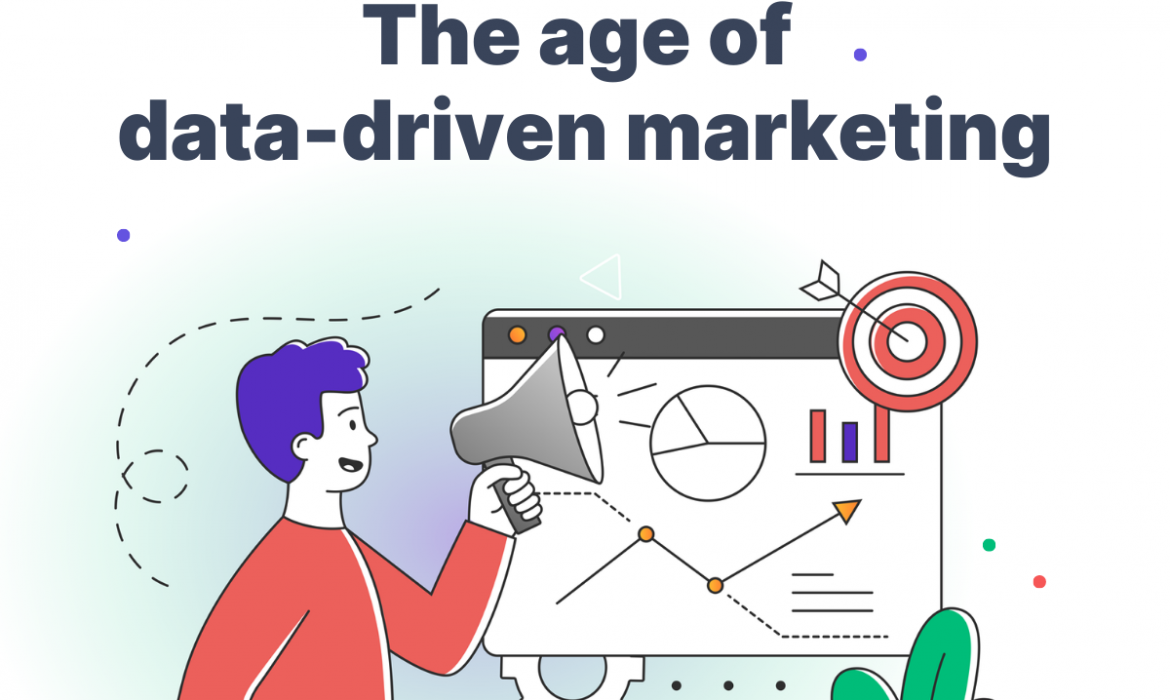Choosing a CRM system that best fits your business needs
A CRM (customer relationship management) system is crucial for winning and retaining business. CRM is not only about managing customer relationships. It’s also about gaining a better understanding of your business and clients. It helps you stay in control and effectively meets their needs. In the first few years of the business’s lifecycle, business owners usually store customer information in excels sheets only to realise that when it comes to analysing the customer data and using it to either:
- Create personalised marketing plans
- Improve customer experience through action insights
Hence, choosing a CRM system should be one of the first few decisions a growing business should make based on how it intends to use the customer data.
Identifying Your Needs and Goals
Choosing the appropriate tool is crucial for you and your colleagues to continue advancing the business. With plenty of choices available in the market, it is essential to identify the reason WHY you require a tool and WHAT specific tasks you want it to perform.
What are the benefits of a CRM system?
- A CRM system allows you to see the accurate picture of your customers
- Helps identify, define and segment an Ideal Customer Profile (ICP)
- Build relationships with clients and improve customer service, thanks to insights
- Improve your client communication
- Identify opportunities to upsell or cross-sell
- Help track sales and marketing activities against each client
Factors to consider when choosing a CRM system
What are your most significant needs?
CRM platforms can significantly enhance your business’s efficiency by automating tedious and time-consuming tasks such as data entry and reporting. Therefore, it is crucial to select the right CRM platform that caters to your specific needs and requirements.
When considering different CRM suppliers and platforms, it is essential to identify your specific needs and requirements. Are you looking to improve your customer relationships? If yes, ensure the platform provides the tools to utilise this aspect effectively.
Or are you looking for a way to make quick and informed decisions? A CRM system can provide real-time data on customer engagement and activity through social tools, helping you determine where to focus your new strategies.
What is your budget?
Investing is crucial for growing and scaling a business, so CRM tools are no exception. However, the prices of these tools depend on various factors, such as the features and the number of users, as well as any upgrades or additional options. It’s also important to note that there may be extra charges on top of the initial upfront costs. Therefore, it’s essential to consider how many users you need and not opt for the all-in-one package if it’s unnecessary, especially if only a few staff members will be working on the platform.
What essential features do you require?
A Customer Relationship Management (CRM) tool cannot be expected to work perfectly from the beginning. Its purpose is to facilitate and improve the procedures that are already in place. However, as a business, you must determine what is most crucial for your company. Is it lead management to attract new customers or contact management to maintain relationships with existing clients?
The technology for lead management allows you to choose when to follow up. It analyses demographics and data to help you focus on leads at the right time and secure the sale.
Meanwhile, contact management is an essential factor. You can maintain your relationships with clients by using a tool that helps personalise emails and contacts for each client. This will make them feel special. Additionally, this tool can provide you with data on when to introduce new marketing strategies or products to them.
What sort of integration do you need?
Most CRM systems can integrate with other tools, so it’s essential to verify which software you want to integrate. If a chat function is necessary, or if HR software or website analytics are imperative to you, make sure they are compatible with your chosen CRM system to keep everything running smoothly.
Size of the database and growth forecast
Most CRMs are priced on the number of contacts you hold in the database, so having an idea of the number of contacts you have now in the database and how much you would expect to grow in the contract period with the CRM. Purchasing extra data bolt-ons often proves expensive in the long run, so it is good to have that in mind before purchasing.
Consider your reporting needs
Most CRMs have built-in templates for activity, sales, marketing, and director-level reporting. We strongly recommend testing these templates to see if they meet your reporting requirements.
At Demand Gen, we are experts in utilising various CRM tools – including Hubspot, Monday.com, Salesforce, and more. Speak to our team to take your CRM journey to the next level.
Demand Generation Campaigns for Sales Directors in Tech/Software Companies
Effective demand generation campaigns are crucial for driving business growth in the rapidly evolving tech industry. Recent studies highlight that companies meeting or exceeding their revenue goals tend to attract significantly more website traffic, generating higher numbers of Marketing Qualified Leads (MQLs) and sales opportunities than those not meeting their targets. Companies achieving their revenue goals commonly report having more than 10,000 monthly website visitors.
Moreover, content marketing has emerged as a dominant strategy, particularly within the technology sector, where 43% of companies identify it as a critical investment area, notably higher than in other industries. This underscores the importance of targeted, valuable content in attracting and engaging the right audience. Content formats like video and interactive content show a higher engagement rate in organic or paid campaigns. However, written case studies and well-researched thought leadership pieces have not lost their charm. The value of the content is equivalent to the information that a prospect gets out of a content asset and whether it helps build their understanding about an issue that they are looking to resolve or a new initiative that they are trying to bring into the organisation to improve a process or make their lives easier.
Tactical Insights for Effective Demand Generation Campaigns
Account-Based Marketing (ABM): ABM continues to be a powerful tool, with 76% of marketers observing a greater return on investment through ABM compared to other approaches. This strategy focuses on engaging critical accounts with personalised campaigns, enhancing the conversion rates and effectiveness of marketing efforts.
Leveraging Intent Data: Approximately 40% of technology vendors collaborate with intent data providers to pinpoint potential buyers actively researching related topics. This strategy helps prioritise efforts towards leads with higher conversion potential, making demand generation efforts more efficient and targeted.
Webinars as Engagement Tools: Webinars are recognised for their effectiveness in lead conversion, with 73% of marketers and sales leaders identifying them as reliable methods for generating high-quality leads. This format educates potential clients and directly engages them, increasing the likelihood of conversion.
Content Syndication with a Twist: Unlike typical broad-spectrum approaches, successful software companies now leverage hyper-targeted content syndication networks that cater specifically to niches within the tech industry. These networks provide a platform for distributing whitepapers, case studies, and webinars directly to engaged audiences, thus improving lead quality.
Interactive Tools and Assessments: Tools like ROI calculators or product configuration tools engage users more deeply than static content. For example, a SaaS company providing cloud services could offer a cost-saving calculator to help potential clients estimate their savings by switching to their solution and capturing lead information.
Referral Programs with a Difference: Companies are creating tiered reward systems that offer existing customers escalating benefits for referring multiple successful leads instead of general referral incentives. This increases referrals and encourages sustained engagement from the customer base.
Example of a Demand Generation Campaign – Case Study
A notable example is Quadient, a company implementing a targeted webinar series featuring industry experts. The series was marketed through specialised tech forums and social media platforms, leading to a 40% increase in qualified leads over a quarter.
Generate the Dmenad Your Business Deserves
For sales directors aiming to enhance their sales pipeline, DemandGen.co.uk offers expert services in crafting targeted campaigns that resonate with your specific audience. Our approach ensures that every campaign is data-driven, maximizing ROI by focusing efforts on high-potential leads.
Conclusion
Implementing these innovative demand gen tactics can significantly impact the effectiveness of lead generation campaigns in the tech sector. By focusing on targeted strategies and leveraging detailed analytics, sales directors can transform their approach to meet the evolving demands of the market.
B2B Marketing Trends 2024
As 2024 gets underway, we have been working with clients on their marketing plans and generating demand to get their businesses and products noticed in the ever-changing and competitive landscape. Through these processes we have identified what we think will really shape our plans – and the wider marketing world – over the next year. Do you agree with our take on these B2B marketing trends?
Gen AI (Yes, we really think we should start with this)
Since ChatGPT came into the fore in 2022, so much has changed for businesses and their reliance on Generative AI, including in future marketing plans. Utilising a GenAI strategy is going to be pivotal for moving forward, and if we don’t embrace it as companies working in the tech space, we will fall behind. But it’s about scaling at the right pace and level for you – which processes could benefit? Which are already performing well without? There’s no point in spending and overpromising. Our team can help with this and answer the questions on where to put AI to use in either content or processes. And remember, it’s not going away any time soon – a recent PWC report noted “that 84% of CIOS say they expect to use GenAI to support a new business tool”. Apple recently announced it was working on generative AI software features, and it looks set to be a tool that will remain in the future.
Website personalisation
Lead generation is all about giving that personal touch as we move forward. Gone are the days of cold calling – we need to get the right product in front of the right person.
We explore this with clients in many ways, but one of the biggest trends we’ve seen emerging in recent months is the ability to utilise B2B website personalisation.
What does this mean? Website personalisation offers the ability to change the view for your visitor depending on their location, industry, and demographic. If you have a product that works for multiple industries, then it’s a great way to focus on the decision-makers. For example, if you have someone from an accounts payable team for an insurance company looking to automate their systems, you could use the tech to show them the best use cases and products. We believe that personalisation will increase conversion rates to no end.
Keeping things human
Despite all this being said regarding AI, one of the biggest things to take forward this year and beyond is to remain authentic and think of exactly what the end user – this could be your client or their customer – needs. When we are devising client plans and content, the first thing we do is look at the language, breaking it down to ensure it is not overcomplicated, and, most importantly, tell the end user exactly what benefits they are getting from the service or system they are planning to work with.
Long live video
When working to put together our B2B marketing campaigns, we have to know what an effective way will be to get eyes on the product. We have been telling clients to embrace video content for a long time. There’s been an increased shift in the past year or so, as evidence shows video increases dwell time and traffic on the site and
can give a great ROI.
However, video content must be carefully planned and built into the wider brand marketing plan. Whether it’s a Q&A with an accompanying blog or a product showcase, it needs to be clear and concise, and overall beneficial for the end user.
Ensure your brand is seen by those actively seeking solutions in your industry. Increase awareness and visibility of your products and services across all digital platforms.
5 Essential Steps to Build a B2B Demand Generation Strategy
In today’s highly competitive business landscape, B2B demand generation for software products or services is crucial for sustained growth and success. Crafting a demand-generation strategy can help reach your target audience.
It can also help to convert them into qualified leads. This can ultimately result in increased revenue for your business. In this blog post, you will explore five essential steps to build an effective demand-generation strategy.
Step 1: Define Your Target Audience:
The first step in building a b2b campaign is identifying and understanding who your target audience is. Begin by creating buyer personas that outline your ideal customer’s demographics, interests, pain points, and buying behaviours. This information will help you tailor your marketing messages and tactics to resonate with your audience effectively and generate qualified leads.
Step 2: Develop Compelling Content: Content lies at the heart of any successful B2B campaign.
Create high-quality, valuable content that educates, informs, and entertains your target audience. This could include blog posts, ebooks, whitepapers, videos, webinars, and infographics. Addressing your audience’s pain points and providing solutions can position your brand as a trusted authority and capture their attention.
Step 3: Leverage Multiple Channels: Leverage multiple marketing channels to distribute your content and engage with your target audience.
This may include social media platforms, email marketing, search engine optimisation (SEO), paid advertising, influencer partnerships, and industry events. A multi-channel approach ensures that your message reaches your audience wherever they are, increasing your chances of generating demand.
Step 4: Implement Lead Nurturing Strategies:
Lead nurturing is essential for converting interested prospects into qualified leads. Once you have a customer’s attention and you understand their need, help the customer with information that is relevant to them. If they want to validate your services, provide them proof of your work in the shape of case studies or recommendations.
Providing the right information at the right time helps build trust in your brand and your services. This takes your prospect a step further in their buying decision.
Step 5: Measure and Optimise:
No B2B demand generation campaign is perfect from the start. It’s crucial to measure your key performance indicators (KPIs) and optimise campaigns accordingly. This could mean changing the messaging, graphics, or even the marketing channel.
Track metrics such as website traffic, lead conversion rates, email open rates, click-through rates, qualified leads generated and revenue achieved. Use this data to identify areas of improvement and refine your strategy accordingly. Experiment with different tactics, analyse the results and make data-driven decisions to enhance your demand generation efforts.
Demand generation campaigns are most effective when optimised over some time.
Conclusion: Building a successful B2B demand gen strategy requires careful planning, audience understanding, and consistent execution of marketing campaigns.
To effectively reach your desired audience, it’s important to first define who they are. Once you have a clear understanding of your target audience, you can create engaging and persuasive content that resonates with them. Don’t just rely on one channel to distribute your message, use multiple platforms to ensure maximum exposure.
Finally, implement lead nurturing strategies to maintain engagement and build a lasting relationship with your audience. Measure and optimise your marketing campaigns. By following these five essential steps, you can create a robust framework for generating demand and driving business growth.
Remember, demand generation marketing is an ongoing process. It needs to be adapted and refined to follow market trends and customer preferences. This keeps the process up to date. Stay agile, be responsive, and seek ways to enhance your demand gen strategy for optimal results.
To ensure success, tracking and measuring your demand generation efforts is essential.
Utilise analytics and reporting tools to assess the performance of each tactic and adjust your strategy accordingly. Doing so will help you identify what’s working and what’s not and make adjustments to optimise your efforts. Additionally, keep up with industry trends and customer feedback to ensure your steps are always relevant and practical.
Stay up-to-date with the newest advancements. Make decisions based on data.
This will maximise the effect of your demand-generation strategies. Sustainable business growth will be the result. Examine the data to spot areas where your plan could be improved and adjust accordingly.
Ready to launch your next B2B marketing campaign?
Book a free audit of your landing pages or even the complete plan and set yourself up for success.
The Age of Data-Driven Marketing
Here at Demand Gen, we have been working with various technology companies – both big and small – over the years to successfully market their products and services.
Given that most of these companies were selling software of some form, you would expect they would be tracking their customer experience, collecting data points and redefining their marketing strategies based on plentiful data. However, and rather surprisingly, on many occasions we have seen quite the opposite.
Why is this? Here are some of the common apprehensions we hear about marketing from technology companies:
“Our solutions are too complex and too expensive to be sold online”
“Our customers don’t look for us online”
“Data -driven marketing is for e-commerce clients”
However, we have found some statistics to contradict these comments:
- 80% of the B2B buyers have a made a decision through online research before they decide to contact a sales person
- 50% of B2B sales start with a Google search
- More than 50% of the B2B research about suppliers happens on mobile phones
Are you convinced about rethinking your marketing strategy for 2023? We would encourage you to put aside some of your 2023 marketing budget to understand how your customers behave online and create a market strategy to complement their buying behaviour.
If you don’t where to begin with building data-driven strategy, here are some tools that could help.
- Google Analytics
Google Analytics is by far the most common tool used to analyse website data, taking the market share (31.55% in 2021) when it comes to web analytics.
Using Google Analytics you can see how many visitors you get on your website, where this traffic coming from, the age range and other demographics of your website visitors, how much time are they spending on your website and which pages on the website are most visited on the website.
These basic data points will help you understand your customers better and help you draw insights on which content is popular and what is the high-level profile of your customers. For example, if your website is being read by males between 40-55 based in the UK between 2-5pm, you might want to write your next blog keeping that persona in mind.
Google Analytics now provides limited search term data but search terms data is very useful to identify the relevance of the content on your website.
- Hot Jar
Hot Jar is a very useful tool that provides visual data and heat maps of how people navigate your website.
You can survey your existing users on their experience of the website and hence make changes to the webpage layout or content based on the feedback received from the users. For example, one of our customers was seeing zero conversions on their “book a demo” page. It was their main call to action on the website. After a Hot Jar analysis we noticed that 99% of the visitors to the demo booking page were leaving the page to check the pricing.
Based on the behaviour we added the pricing on the demo booking page and saw a significant increase in the time spent on the page and the requests for demos started to trickle through. Optimisations to content and UX based on data collected from Hotjar can often be a game changer
.
- Social Media Analytics
B2B business mostly use LinkedIn and Twitter as their main social platforms although that might be changing soon with more and more creative content available on TikTok.
TikTok is proving to be hit with businesses as a marketing channel, and according to a recent Capterra TikTok marketing survey “well over half of small retailers and restaurants that market themselves on TikTok say their organic and advertising content on TikTok is extremely valuable to their overall marketing performance, and 78% say they’ve realized a positive ROI with TikTok ads.”
Social media behavioural data can provide great insights into people’s behaviour. It’s difficult to integrate all social media platform data into one report that provides a 360 degree view of customer behaviour.
Yes, we are now talking about multi-channel tracking to be able to track exactly how customers interact with your brand across various platforms – social, website, physical paper-based marketing, affiliate marketing, webinars, events and mobile phones. Gathering all data into one reporting and drawing insights is a huge challenge for businesses and often a grey area. We have worked on various projects helping clients reconcile data from various sources and provide a true picture of what’s happening with online presence and overall marketing.
We would love to hear from you if this is something you are struggling with – not because we want to sell you a solution for it – but we are keen to understand how big this issue of data gaps is and even with the availability of so many reporting tools, there is a gap in the market to enable accurate data driven marketing.





